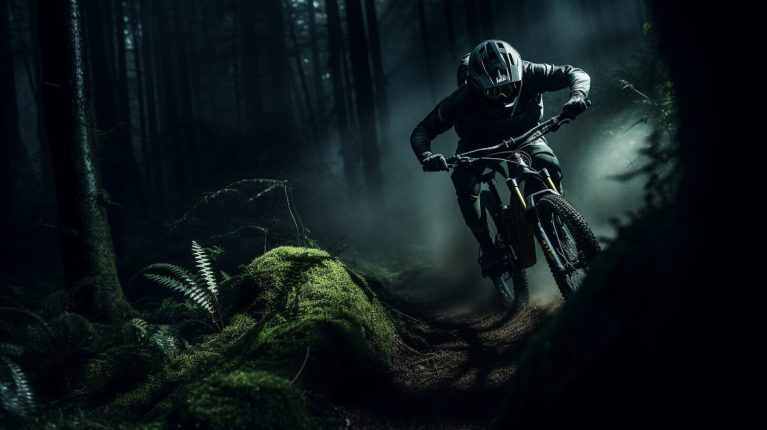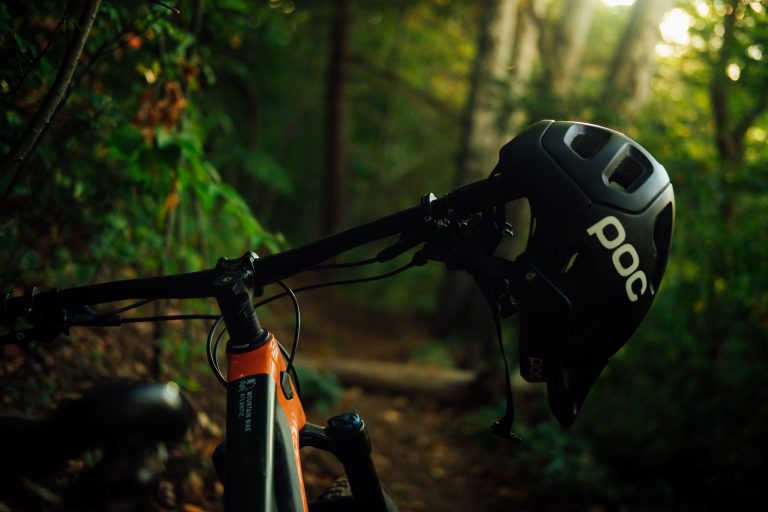Mountain Bike Front Suspension: A Comprehensive Guide
Mountain biking is an exhilarating sport, a way to explore nature, and a fantastic form of exercise. One of the key components that contribute to the performance and comfort of a mountain bike is its front suspension. In this article, we’ll delve into the world of mountain bike front suspensions, exploring their importance, how they work, and how to choose the right one for your biking needs.
The Importance of Front Suspension in Mountain Biking
Mountain biking often involves navigating rough terrains, from rocky paths to muddy trails. The front suspension of a mountain bike plays a crucial role in absorbing the shocks from these uneven surfaces, providing a smoother ride and reducing the strain on the rider’s body.
“Mountain biking is more than just a sport or a hobby, it’s a lifestyle. And like any lifestyle, it requires a certain level of maintenance and understanding of your equipment.” – Mountain Bike Maintenance Guide
Without a good front suspension, not only would the ride be uncomfortable, but the control and stability of the bike could also be compromised, potentially leading to accidents.
Understanding Mountain Bike Front Suspension
The front suspension of a mountain bike, often referred to as the “fork,” is made up of two struts that connect the front wheel to the frame’s head tube. These struts contain springs and dampers that compress and rebound as the bike encounters bumps, absorbing the impact and preventing it from being transferred to the rider.
There are different types of front suspensions, each with its own set of features, pros, and cons. Let’s take a closer look at some of them.
Types of Mountain Bike Front Suspensions
1. Telescopic Forks
Telescopic forks are the most common type of front suspension found in mountain bikes. They consist of two parallel shock absorbers that compress and extend to absorb shocks. They are popular due to their simple design, ease of maintenance, and good performance.
2. Linkage Forks
Linkage forks use a series of linkages and levers to provide suspension. They offer excellent performance and adjustability, but they are more complex and often more expensive than telescopic forks.
3. Lefty Forks
Lefty forks are a unique type of front suspension that features a single strut on the left side of the wheel. Despite having only one strut, they are incredibly strong and lightweight, making them a popular choice for competitive mountain biking.
In the next section of this article, we’ll be reviewing some of the top brands and models of mountain bike front suspensions, and providing tips on how to choose the right one for your biking style and terrain.
Top Brands and Models of Mountain Bike Front Suspensions
When it comes to mountain bike front suspensions, there are several brands that stand out due to their commitment to quality, innovation, and performance. Let’s take a look at some of the top brands and their popular models.
1. RockShox
RockShox is a renowned brand in the mountain biking community, known for its wide range of high-quality suspension products. One of their standout models is the RockShox Pike Ultimate RC2, a versatile fork that offers excellent responsiveness and control, making it a great choice for trail and enduro riding.
2. Fox Racing Shox
Fox Racing Shox is another leading brand in the mountain bike suspension market. Their Fox 36 Factory GRIP2 is a high-performance fork that features advanced damping technology for improved ride quality and adjustability.
3. Manitou
Manitou offers a range of mountain bike suspensions that balance performance and affordability. Their Manitou Mezzer Pro is a top-tier fork that delivers exceptional performance in various trail conditions.
4. Marzocchi
Marzocchi is a brand known for its durable and reliable mountain bike suspensions. The Marzocchi Bomber Z2 is a popular model that offers a great balance of performance, durability, and value.
Choosing the Right Mountain Bike Front Suspension
Choosing the right front suspension for your mountain bike can significantly enhance your riding experience. Here are some factors to consider:
1. Riding Style
Your riding style is one of the most important factors to consider. For instance, cross-country riders might prefer a lightweight suspension with moderate travel, while downhill riders might need a robust suspension with high travel.
2. Terrain
The type of terrain you usually ride on also influences your choice of suspension. Rough and rocky terrains might require a suspension with higher travel and more advanced damping features.
3. Budget
Mountain bike suspensions can vary greatly in price. Determine your budget beforehand and try to find a suspension that offers the best balance of cost and performance.
Choosing the right front suspension can make a world of difference in your mountain biking experience. In the final part of this article, we’ll answer some frequently asked questions about mountain bike front suspensions and provide tips on maintenance and upgrades.
Frequently Asked Questions
When it comes to mountain bike front suspensions, there are several questions that often come up. Let’s tackle some of the most common ones.
1. Do I need front suspension on my mountain bike?
While not all mountain bikes require front suspension, it’s highly recommended for most off-road biking. Front suspension absorbs shocks from uneven terrain, providing a smoother ride and reducing the strain on the rider’s body. This is especially important when riding on rough trails or downhill.
2. What is the best suspension for a mountain bike?
The “best” suspension depends on your specific needs and preferences. Brands like RockShox, Fox, Manitou, and Marzocchi all offer high-quality suspensions. Consider factors like your riding style, the type of terrain you usually ride on, and your budget when choosing a suspension.
3. What is the front suspension of a mountain bike called?
The front suspension of a mountain bike is commonly referred to as the “fork.” It consists of two struts that connect the front wheel to the frame’s head tube, containing springs and dampers that absorb shocks.
4. Can you add front suspension to a mountain bike?
Yes, it’s possible to add front suspension to a mountain bike, but it’s a complex process that requires technical knowledge and the right tools. It’s recommended to have this done by a professional to ensure proper installation and safety.
Maintenance and Upgrades
Maintaining your mountain bike front suspension is crucial for its longevity and performance. Regularly clean and lubricate the moving parts, and check for any signs of damage or wear. If you notice a decrease in performance or any unusual noises, it might be time for a service or repair.
Upgrading your front suspension can significantly improve your bike’s performance. However, it’s important to choose an upgrade that’s compatible with your bike and suitable for your riding style and terrain. Consult with a professional or do thorough research before making any major changes to your bike.
Conclusion
Choosing the right front suspension for your mountain bike can significantly enhance your riding experience. By understanding how front suspensions work and considering factors like your riding style, terrain, and budget, you can find the perfect suspension for your needs. Remember, regular maintenance is key to keeping your suspension in peak condition and ensuring a smooth and enjoyable ride.
Whether you’re a seasoned mountain biker or a beginner, we hope this guide has provided valuable insights into the world of mountain bike front suspensions. Happy trails!
“Mountain biking is an adventure of a lifetime with incredible views and thrilling trails. Equip your bike with the right front suspension and make the most of your ride.” – Exploring England’s Best 10 Mountain Bike Trails






